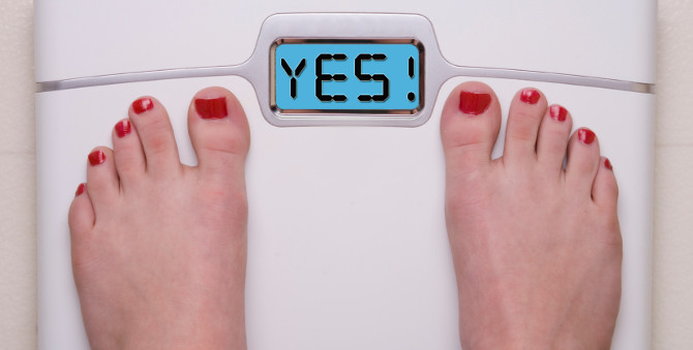Maintaining a healthy BMI can help you look and feel your best, and significantly reduce your chances of developing certain diseases. It's important to know what your healthy, ideal BMI is to help you maintain a healthy weight and lifestyle.
What is a Healthy BMI?
Your BMI (Body Mass Index) is a reliable indicator of your total body fat and risk for developing certain diseases such as heart disease, hypertension, and type 2 diabetes. BMI is based on your height and current body weight. To significantly reduce your disease risk and stay healthy it's important to maintain a BMI in the normal weight category. Keep in mind that BMIs do not take into account extremely muscular individuals such as body builders or individuals who have lost a lot of lean muscle.
A healthy BMI is 18.5-24.9. BMIs less than 18.5 are considered underweight, 25 - 29.9 overweight, 30 or above obese, and 40 or above extremely obese. BMIs in the overweight and obese categories can increase your risk of developing certain diseases. If you are underweight (BMIs less than 18.5), you are also at an increased risk of developing health problems (such as amenorrhea in women).
How Can I Calculate My BMI?
Your BMI can be calculated by using the following formula: BMI = weight (in pounds) X 703 / height (inches) / height (inches). For example, if you are 65 inches tall (5-foot-5) and weight 160 pounds you'd take 160 lb. X 703 / 65 in. / 65 in. = 26.6 which would be in the overweight category. You'd need to lose about 11 pounds move up to the normal weight category (149 Ib. X 703 / 65 in. / 65 in. = 24.8). If you're overweight, knowing your BMI can help you choose an appropriate and healthy goal weight.
Waist Circumference
In addition to BMI, waist circumference can help determine your disease risk; it's also a good indicator of how much abdominal fat you possess. Waist circumference is the total distance around your waist, and can be measured with a tape measure. A waist circumference greater than 35 inches in women and (greater than) 40 inches in men increases obesity-related disease risk.
What's My Disease Risk?
If your BMI is within the overweight or obese categories you are at increase disease risk; however if you also have a waist circumference greater than 35 inches (for women) or 40 inches (for men), your risk is even higher. Your risk for disease is lowest when your waist circumference and BMI are both within a normal range.
What's My Body Fat Percentage?
Even if your BMI is high, if you have lots of muscle and a low body fat percentage you may not be at risk for disease. There are many different ways to calculate your body fat, including skin fold calipers, bioelectrical impedance analysis and underwater weighing. Your health care provider or a trainer at your local gym may be able to help estimate your body fat percentage. The recommended body fat percentage in women is about 20-21% and in men about 13-17% (athletes may be lower).



